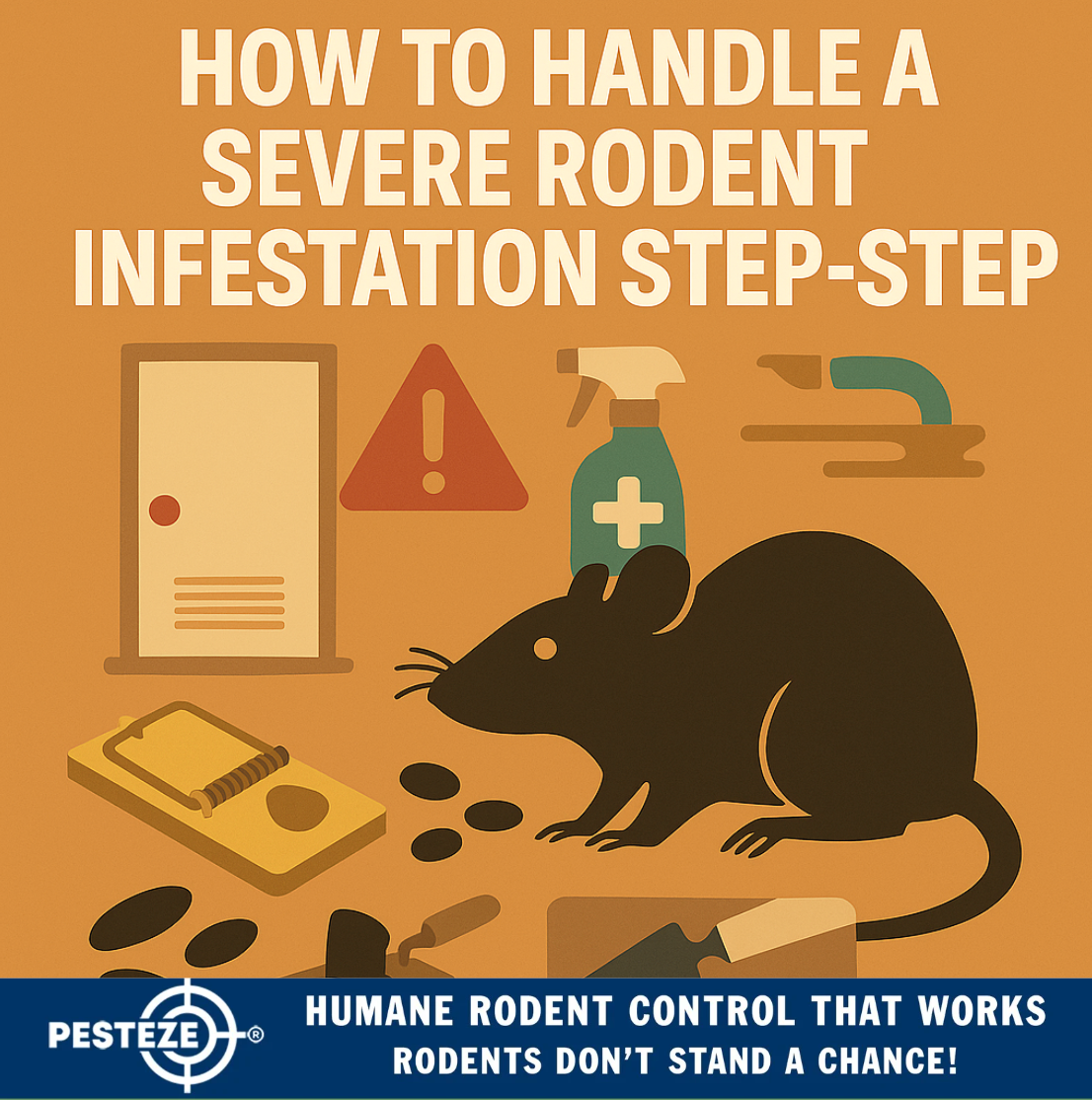HOW TO HANDLE A SEVERE RODENT INFESTATION STEP-BY-STEP

HOW TO HANDLE A SEVERE RODENT INFESTATION STEP-BY-STEP
SUMMARY
When rodent activity is heavy—multiple sightings, fresh droppings, noises in walls, or damaged wiring—you need a fast, structured response. This guide walks you through an actionable, step-by-step plan to contain, eliminate, and prevent severe infestations safely.
FEATURES
-
Emergency Containment: Close interior doors, block gaps, and restrict movement.
-
Safety First: Wear gloves, mask, and eye protection for all cleanup.
-
Rapid Knockdown: Deploy high-density trap lines and locked bait stations.
-
Sanitation Reset: Remove food, water, and nesting materials immediately.
-
Hard Exclusion: Seal exterior and interior entry points with durable materials.
-
Monitoring & Follow-Up: Inspect, document, and re-treat until zero activity.
DESCRIPTION
A severe rodent infestation demands immediate containment. Start by isolating active zones: shut doors, install temporary door sweeps or towel blocks, and keep pets and children away. Turn on bright lights in affected rooms to discourage movement and make evidence easier to spot. Put on protective gear—disposable gloves, an N95-type mask, and eye protection—before handling traps or cleaning contaminated areas.
Next, establish a rapid-knockdown strategy. Place snap traps every 3–6 feet along walls where droppings, rub marks, or runways appear; double-set corners for higher capture rates. Use a smear of peanut butter or high-fat bait, and pre-bait (without setting) for one night if rodents are trap-shy. In commercial or large homes, add tamper-resistant bait stations outdoors and in utility areas, following label directions and keeping them inaccessible to kids, pets, and non-target wildlife.
While traps work, perform a sanitation reset. Store all food in airtight containers, remove pet bowls overnight, bag and remove trash daily, and deep-clean grease, crumbs, and spills. Eliminate water sources by fixing leaks and running a dehumidifier where needed. Remove nesting material—cardboard stacks, cluttered shelves, fabric piles—to collapse harborage.
Now harden the structure. Outside, seal gaps larger than a pencil with steel wool backed by caulk, metal flashing, or hardware cloth; repair screens, install ¼-inch mesh on vents, and add door sweeps. Inside, foam alone is not enough—reinforce with metal mesh around pipe penetrations, behind appliances, and at cabinet cutouts. Trim vegetation back 18 inches from walls and elevate firewood.
Monitor and iterate. Check traps at least daily; record captures, reset, and rotate placements based on fresh evidence. Disinfect droppings by misting with a bleach solution (1:10) before wiping—never dry sweep. Once captures cease for 10–14 days and no new signs appear, transition to maintenance: monthly inspections, exterior bait stations (where appropriate), and seasonal sealing.
If you still hear wall activity, see daytime sightings, or smell dead-rodent odors, call a professional for wall-void trapping, attic/crawl remediation, odor control, and an integrated pest management plan. Sustained prevention—sanitation, exclusion, and monitoring—keeps the structure rodent-free.
- Saharsh Bansal


Comments 0